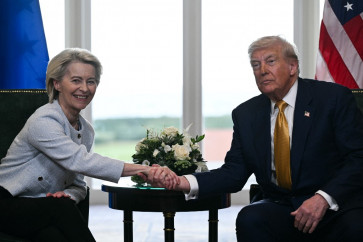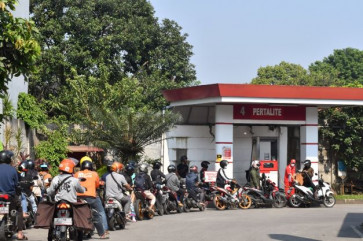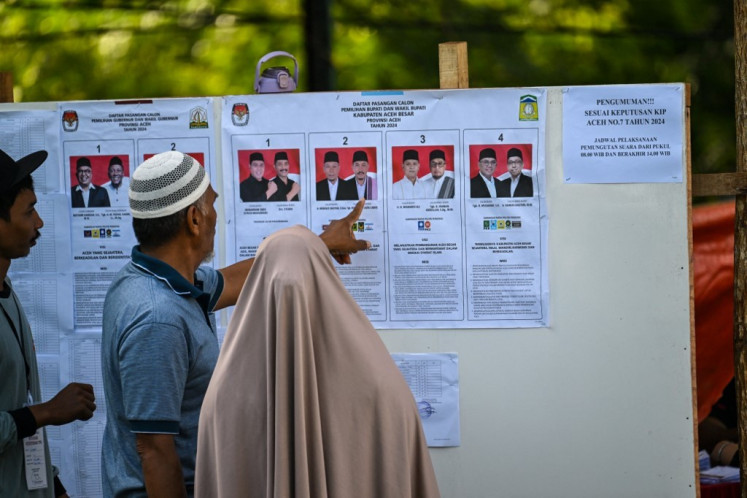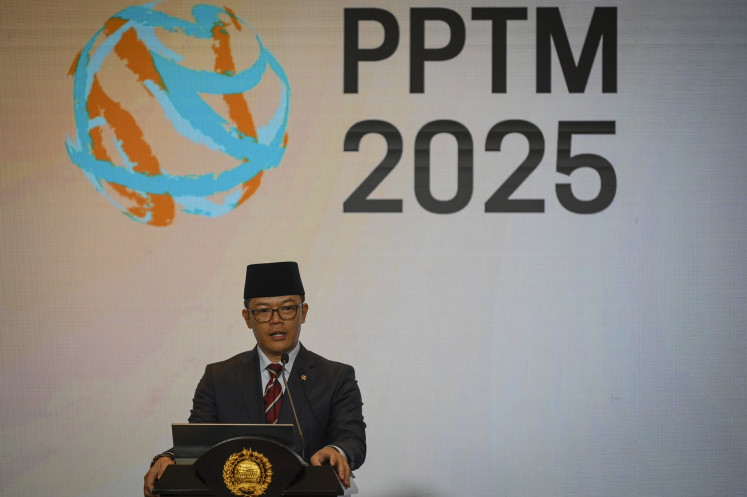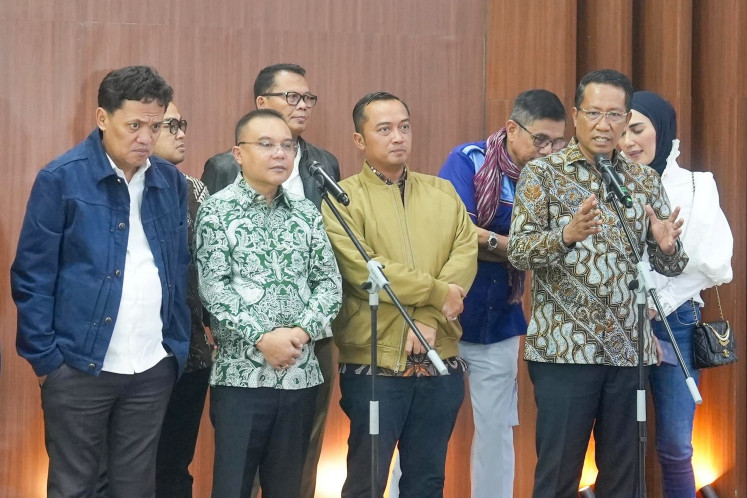Popular Reads
Top Results
Can't find what you're looking for?
View all search resultsPopular Reads
Top Results
Can't find what you're looking for?
View all search resultsKota Tua to be part of ‘spice trail’ plan
Following the rejection to include Kota Tua in West Jakarta on the list of UNESCO World Heritage Sites, the Education and Culture Ministry’s subdirectorate of world heritage objects has planned to combine it, under one proposal, with several other old town areas in Indonesia
Change text size
Gift Premium Articles
to Anyone
F
ollowing the rejection to include Kota Tua in West Jakarta on the list of UNESCO World Heritage Sites, the Education and Culture Ministry’s subdirectorate of world heritage objects has planned to combine it, under one proposal, with several other old town areas in Indonesia.
“In making a new proposal [for the UNESCO World Heritage list], we plan to make a list of old towns throughout the country that share history in the spice trade back in colonial times. We’d name the proposal ‘Indonesia’s Spice Trail’,” the subdirectorate head Yunus Arbi told The Jakarta Post on Tuesday.
He mentioned the old town area in Semarang, Central Java, and another one in Banda Islands, Maluku. Both have been on UNESCO’s tentative world heritage list since 2015.
The plan was inspired by the Silk Road — the ancient network of trade routes that connected China and other parts of Asia with the West. The Silk Road was named a UNESCO World Heritage Site in 2014.
Melaka and George Town in Malaysia could be examples too, Yunus said, as they are historical cities that have developed over 500 years of trading and cultural exchange between the East and the West in the straits of Malacca.
The ministry currently works with history and culture experts as well as local administrations in which the old towns are located. They are attempting to gather as much information as possible in order to make a more solid proposal. The government, therefore, will not rush the process.
Regarding Kota Tua in Jakarta, Yunus admitted that UNESCO’s rationale behind the rejection made sense.
UNESCO’s advisory board, the International Council on Monuments and Sites (ICOMOS), published a report earlier this month that said Kota Tua lacked “integrity and authenticity” as an old town.
“They’re right. The Kota Tua area has been mismanaged,” Yunus said.
“The government and the city administration should have been using a cultural heritage approach in managing the area so that the 20th century architectural buildings would still be preserved. But it’s not what we see happening today in Kota Tua,” he added.
According to him, many parts of the Kota Tua area have been developed into modern buildings by private developers. The place has only a few iconic buildings and objects that are scattered here and there, such as Fatahillah Square and the Maritime Museum.
Kota Tua Zone Management Unit head Novriadi Setio Husodo said the city administration might only be able to resubmit the nomination dossier after another three or four years due to the long list of nominations.
In the meantime, the city administration will focus on revising the proposal by engaging other stakeholders, such as the central government, which owns 48 percent of the buildings in Kota Tua; private parties, who own half of the buildings in the area; as well as historians and archaeologists.
Novriadi added that the central government might decide to name Kota Tua a national cultural heritage site to accelerate the revitalization process as currently it was still only a provincial cultural heritage site.
Meanwhile, Jakarta Cultural Heritage Expert Team (TACB) member Candrian Attahiyat said the city administration might focus on nominating the Kota Tua area for the World Heritage List and exclude the outlying islands — Onrust, Kelor, Cipir and Bidadari islands in Thousand Islands regency.
ICOMOS stated earlier that the nominating country, Indonesia, had failed to give a solid explanation about the historical connection between Kota Tua and the four outlying islands.
“We have suggested the city administration exclude the outlying islands because those islands are quite far from Kota Tua,” Candrian said.
Candrian went on to criticize the development project in Kota Tua, which did not consider the historical aspect or the sustainability principle.
For instance, the function of Kali Besar had been turned into a reservoir, a fact that made ICOMOS refuse to name Kota Tua a world heritage site, Candrian said.
Novriadi echoed the statement, saying the development was not in line with the historical aspect of the object.
The revitalization of Kali Besar, which was initiated by former governor Basuki “Ahok” Tjahaja Purnama, began without the approval of the TACB.
The Kali Besar park was inaugurated by Jakarta Deputy Governor Sandiaga Uno last Friday.
“The city administration may consider restoring the river function in the future. I’m still waiting for the governor’s instructions,” Novriadi said.


